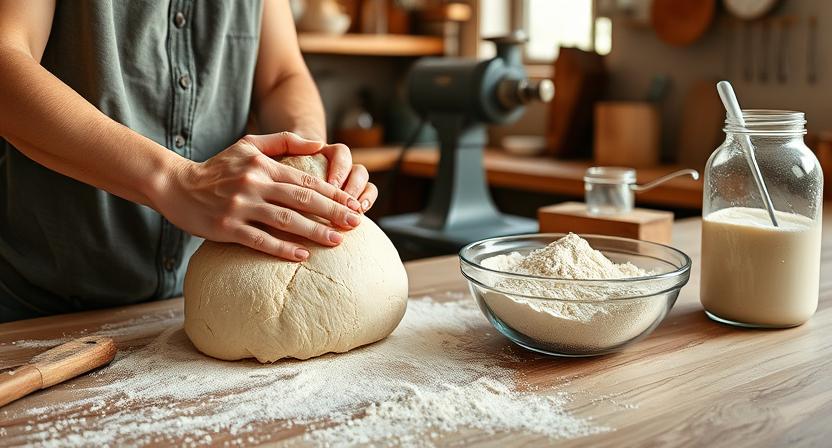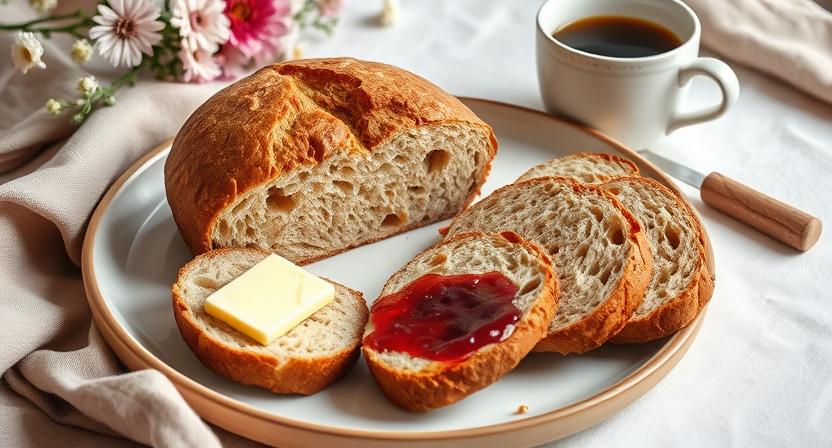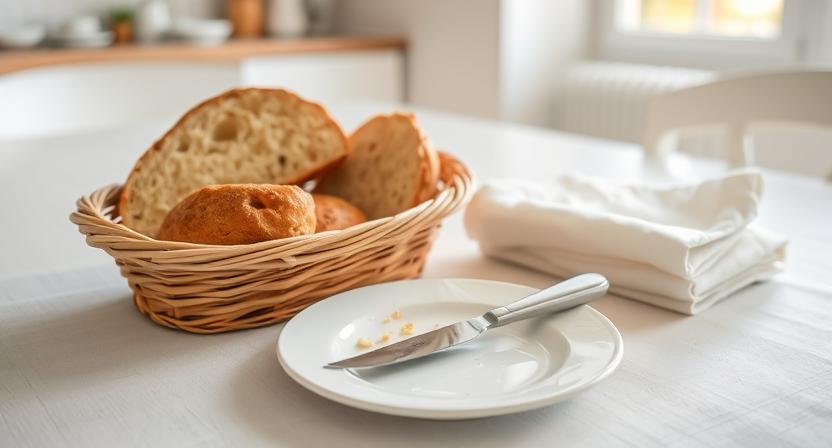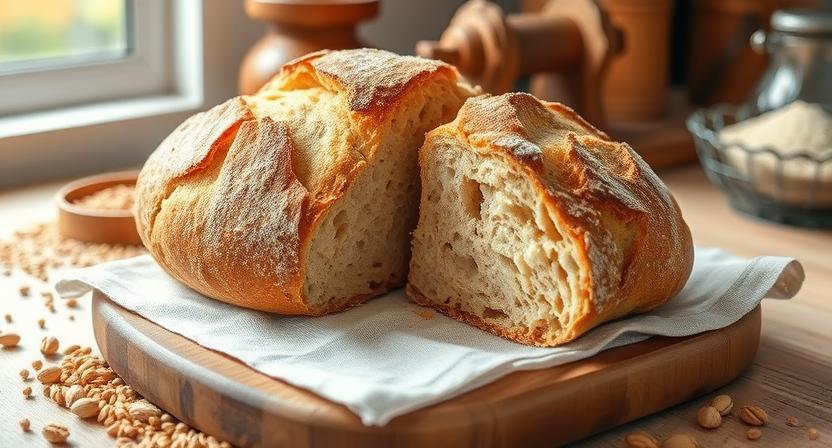Fresh milled sourdough bread homemade baking benefits from the distinct texture, fresh milled sourdough bread flavour, and nutritional value that freshly milled flour offers. This recipe for fresh milled sourdough bread is a great way to start if you’ve ever wanted to improve your baking skills.Fresh milled sourdough bread With the help of this step-by-step instruction, you can make nutritious, delectable bread in your own kitchen.
Benefits of Baking with Freshly fresh milled sourdough bread
The bran, germ, and endosperm are retained in freshly milled grains, fresh milled sourdough bread adding nutrients and a richer flavour to your sourdough bread. Because the natural oils in whole grains begin to break down rapidly after milling, on-demand milled flour is of higher quality.
Rye, einkorn, spelt, and whole wheat are all great grains to try. Utilising them immediately following milling aids in maintaining nutrients and enzymes that improve digestion and fermentation.
Understanding the Sourdough Process
Using wild yeast and naturally occurring lactobacilli, dough is fermented to create sourdough bread. The sourdough process yields a more flavourful and substantial product, but it takes longer than commercial yeast bread.
Here’s what the sourdough process includes:
- Making a beginning and feeding it
- Autolysis (water and flour at rest)
- For the growth of gluten, stretch and fold
- Fermentation in bulk
- Last-minute shaping and proofreading
- Baking
Every stage plays a role in flavor, texture, and crust.
Choosing Grains for Your Fresh Milled Bread
Best Grains to Mill at Home
If you’re aiming for optimal flavor and structure, choose grains that work well in artisan-style loaves:
- Hard red wheat is very good for building
- Hard white wheat has a paler hue and flavour.
- Spelt: It tastes milder but requires careful hydration.
- Einkorn: less gluten yet still nutrient-dense
- Rye: Excellent for fermentation and flavour
Each grain offers something different. Experiment to see which combination suits your preference.
Tips for Milling at Home
A high-quality grain mill will yield reliable results. To prevent the flour from scorching, clean your grains before milling and grind in small batches. For the majority of bread recipes, a fine to medium-fine texture works nicely.

Building and Maintaining a Healthy Starter
A mixture of flour and water that is allowed to ferment is called a sourdough starter. Over time, bacteria and wild yeast grow to form the vital foundation of sourdough bread.
Steps to Build Your Starter
- In a jar, combine equal parts water and freshly ground flour.
- Give it a full day at room temperature.
- Give it more new flour and water every day.
- In order to control volume, discard 50% at each feeding.
- Bubbles and a rise should show that the product is ready after 5–7 days.
Use fresh milled flour in the feeding process to create a robust, active starter.
Fresh Milled Sourdough Bread Recipe Ingredients
Here’s a basic formula tailored for home bakers:
- 500g of whole wheat flour that has just been ground
- 350–375g of water (based on hydration and grain type)
- 100g of sourdough starter that is active
- Ten grammes of salt
This blend gives a great balance of flavor and structure. Adjust hydration as needed for softer doughs like spelt or einkorn.
Step-by-Step Guide to Making the Bread
1. Mix and Autolyze
Mix the flour and water together and leave for 30 to 45 minutes. This increases the dough’s elasticity and activates the flour’s enzymes.
2. Add Starter and Salt
Mix the dough with your starter and salt. For a better texture and hydration feel, use your hands.
3. Stretch and Fold
Spend two hours performing three to four sets of stretches and folds. Between each set, allow the dough to rest. This facilitates gluten development without kneading.
4. Bulk Fermentation
The dough should rise by roughly 50% after 4–6 hours at room temperature. To keep the bowl from drying out, keep it covered.
5. Shaping
Form the dough into an oval or round loaf with gentle pressure. Use as little flour as possible to keep hydrated.
6. Final Proof
Shaped dough should be put into a basin or banneton that has been lined with a towel and floured. Allow it to proof for 6–10 hours or overnight in the refrigerator.
7. Bake
With a Dutch oven inside, preheat your oven to 475°F (245°C). After transferring the dough and scoring the top, bake it for 20 minutes with a lid on and another 20 to 25 minutes without one.
Let the loaf cool for at least an hour before slicing.
Why Try a Fresh Milled Sourdough Bread Recipe?
A more enjoyable loaf, improved nutrition, and a deeper flavour are all provided by using freshly milled flour. It’s hard to top the rustic, home-cooked vibe that traditional sourdough and whole grains provide.
For optimal results, this recipe urges you to use hands-on techniques and slow baking. Every stage—from grinding to fermenting—contributes to a satisfying and healthful bread.

Common Mistakes to Avoid in Sourdough Baking
Inconsistent Starter Feedings
Flavour and ascent are impacted by a weak beginning. Feed it frequently and consistently to keep it active.
Poor Dough Hydration
Your bread will get dense if it is overly dry. It will lose its shape if it is too damp. For your selected grain, use the appropriate hydration ratio.
Skipping Bulk Fermentation Signs
Consider your dough instead of the clock. Bubbles and a slight bounce when moved are signs of a well-fermented dough.
Rushing the Process
Time is of the essence. Shortening rest intervals or skipping stages results in less flavour and texture.
Storing Fresh Milled Sourdough Bread
Store your sourdough bread in a towel or cotton bag. Keep for up to three days at room temperature. Cut into slices and freeze for extended storage. Avoid plastic since it retains moisture and encourages the growth of mould.
Toast slices right away or reheat an entire loaf in the oven for 10 minutes at 350°F (175°C) to rehydrate.
Variations on the Fresh Milled Sourdough Bread Recipe
Once you master the basics, explore variations to keep things exciting:
- For crunch, add seeds like sunflower, sesame, or flax.
- Add mix-ins like cheese, herbs, or olives.
- Try grains such as kamut, buckwheat, or rye.
Every adjustment brings new flavor and texture profiles.
Troubleshooting Sourdough Bread Made with Freshly Milled Flour
Dough Too Sticky
High moisture or undeveloped gluten may be the cause of sticky dough. Increase the number of stretch-and-fold sets.
Flat Loaf
This can be a sign of poor shape, a weak beginning, or overproofing. Improve your shaping skill or proof for a shorter amount of time the next time.
Dense Interior
Most likely due to low oven spring or inadequate fermentation. Make sure the oven is completely warmed and that your starter is turned on.

Why This Fresh Milled Sourdough Bread Recipe Stands Out
The aroma, flavour, and health advantages of fresh flour are unparalleled. The lengthy fermentation phase of sourdough breaks down phytic acid and enhances mineral absorption while blending well with whole grains.
An artisan loaf should have an open crumb, a crunchy surface, and a richly flavourful bite, all of which are produced by the combined process.
Need more Information? Also read these topics for more information
Einkorn Sourdough Discard Recipes for Tasty Homemade Meals
Vegan Soul Food Recipe Book: Southern Comfort Made Easy
Final Thoughts
From beginning to end, making a loaf using a fresh milled sourdough bread recipe is a fulfilling experience. It introduces you to traditional techniques and the potency of complete, natural components. Every loaf you make turns into an expression of your skill, perseverance, and practice.
Regardless of whether you’ve never used sourdough before or are just switching to freshly ground flour, this recipe lays the groundwork for a tasty, nutritious routine that you’ll want to stick with.
